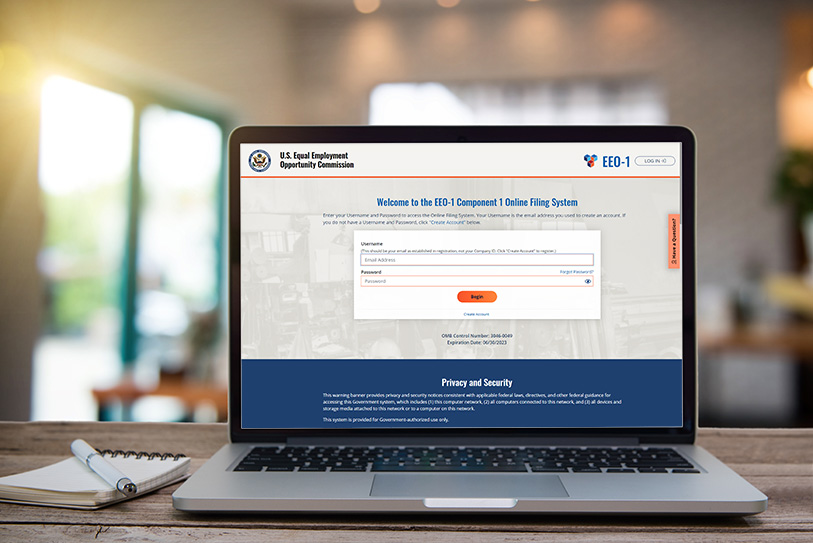As reported in late March, the U.S. Equal Employment Opportunity Commission (EEOC) 2019 and 2020 EEO-1 Component 1 data collection began on Monday, April 26, 2021 — and employers have until Monday, July 19, 2021, to submit these two years’ worth of data.
On April 26, the EEOC issued a press release with guidance for both eligible employers that have received a 2019 and 2020 EEO-1 Component 1 notification letter via U.S. mail and employers that haven’t received this notification letter.
The guidance for employers that haven’t received this letter is simple and straightforward: They should contact the EEOC’s Filer Support Team at FilerSupport@eeocdata.org for assistance.
For employers that have received the notification letter, they may now create user accounts with the “Company ID” and “Passcode” provided in the notification letter. Once that’s done, the EEOC states that there are two different ways to file the 2019 and 2020 EEO-1 Component 1 Report(s):
- Via Online Form
As of Monday, April 26, 2021, filers may enter their data into a secure data entry form via the EEO-1 Component 1 Online Filing System. - Via Data File Upload
Starting Wednesday, May 26, 2021, filers may upload data files through the EEO-1 Component 1 Online Filing System. The format of the uploaded data file(s) must follow the file layout(s) set forth in the EEOC-approved specifications available beginning Wednesday, May 26, 2021, at EEOCdata.org/eeo1.
As a reminder, the EEO-1 Component 1 report is mandatory for all private-sector employers with 100 or more employees, and federal contractors with 50 or more employees meeting certain criteria. The collected data includes demographic workforce data, including data by race/ethnicity, sex and job categories.
For the latest filing updates and additional information, visit the EEO-1 Component 1 website. Employers can request assistance and find helpful resources, including fact sheets and FAQs, by visiting the Filer Support Center.
Jessica Mulholland, Managing Editor, CalChamber
CalChamber members can read more about EEO Reporting Requirements, including pay data reporting in California, in the HR Library. Not a member? See how CalChamber can help you.




